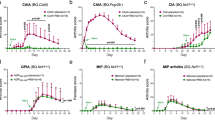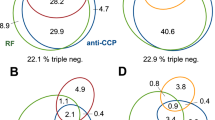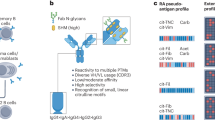Abstract
Filaggrin is expressed in the cornified layer of epidermis and known to be one of the antigenic targets in rheumatoid arthritis. Although the citrulline residue in filaggrin is thought to be an antigenic determinant recognized by autoantibodies, the diagnostic sensitivity of synthetic citrullinated peptide is variable. To investigate the implication of anti-filaggrin antibodies recognizing uncitrullinated filaggrin in rheumatoid arthritis, we assayed antibody titers using unmodified recombinant filaggrin in the sera from 73 patients with rheumatoid arthritis, 150 patients with other connective tissue diseases and 70 normal controls. We also performed the correlation analysis between antibody titers and the clinical variables in patients with rheumatoid arthritis. Titers of IgG anti-filaggrin antibodies were significantly higher in rheumatoid arthritis patients compared to normal controls (P=0.02), but not in patients with osteoarthritis, ankylosing spondylitis or systemic lupus erythematosus. IgG anti-filaggrin antibodies were more frequently found in patients with rheumatoid arthritis compared to normal controls (12.3% vs 1.4% respectively, P=0.04). An anti-filaggrin antibody titer was correlated with visual analogue scale of pain, tender joint count, Ritchie articular index or C-reactive protein, but not with anti-nuclear antibody or rheumatoid factor. These results suggest that anti-filaggrin antibody recognizes the uncitrullinated filaggrin as an antigen and its titer correlates with clinical parameters, explaining the variable sensitivity of anti-filaggrin antibody test.
Similar content being viewed by others
Article PDF
Author information
Authors and Affiliations
Rights and permissions
This is an Open Access article distributed under the terms of the Creative Commons Attribution Non-Commercial License (http://creativecommons.org/licenses/by-nc/3.0/) which permits unrestricted non-commercial use, distribution, and reproduction in any medium, provided the original work is properly cited.
About this article
Cite this article
Choi, KH., Lee, E., Yoo, C. et al. Clinical significance of anti-filaggrin antibody recognizing uncitrullinated filaggrin in rheumatoid arthritis. Exp Mol Med 37, 546–552 (2005). https://doi.org/10.1038/emm.2005.67
Published:
Issue date:
DOI: https://doi.org/10.1038/emm.2005.67
Keywords
This article is cited by
-
One Remarkable Molecule: Filaggrin
Journal of Investigative Dermatology (2012)



